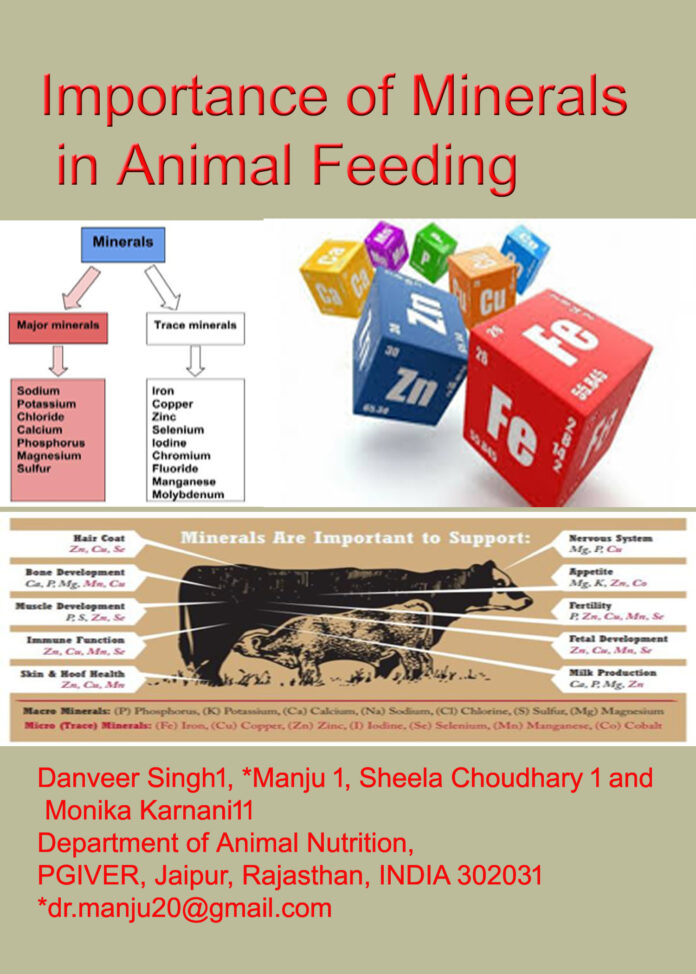VITAMIN E: ITS FUNCTION AND DEFICIENCY SYMPTOMS
- SHIRISHA1, RAJASHEKAR KAMALLA2
Ph.D scholar, Department of Veterinary Public Health and Epidemiology, Kamdhenu University, Gujarat. Ph.no-7993530733, shirisharao54@gmail.com
Ph.D scholar, Division of Veterinary Medicine, ICAR-IVRI, Izatnagar, Bareilly, UP, India. Ph.no-7093012958, 369rsk@gmail.com
Introduction
It was identified as a fat-soluble component in 1922 by Evans Mattill, and Bishop. It was isolated as alpha tocopherol later in 1936. Tocopherol is a Greek word that means alcohol that bears children. Alpha tocopherol is more active than beta, gamma, and delta.
Functions
1) At the cellular level, it functions as a natural antioxidant and is crucial for biological oxidation-reduction reactions. The animal defends itself against oxidative damage via two major mechanisms. First, vitamin E neutralises free radicals produced during cellular metabolism and then glutathione peroxidase eliminates any generated peroxides before they may harm the cells. As a result, glutathione peroxidase and vitamin E work well together. It guards against oxidation of carotenoids and vitamin A in the gastrointestinal system as well as in the cells.
2) In addition to extending the time that vitamin A is stored in the liver, adequate dietary vitamin E appears to help in the absorption and utilisation of vitamin A, carotene and xanthophylls. Extra vitamin E tends to impede optimal vitamin A storage and expedite the loss of vitamin A reserves.
3) Additionally, the metabolism of selenium and vitamin A, the creation of ubiquinone, the metabolism of sulphur amino acids and phosphorylation processes are all directly related to vitamin E.
4) Vitamin E is important for the growth and operation of the immune system.
1) In male rats, vitamin E insufficiency causes immobility of spermatozoa and degradation of the germinal epithelium, while in female rats, infertility is the classic indication of deficiency.
2) The disorder known as nutritional myopathy, commonly referred to as nutritional muscular dystrophy, mostly affects the skeletal muscles of chickens, pigs and lambs. Mulberry heart disease in pigs is another name for it.
3) There are various types of nutritional myopathy, including stiff lamb illness in suckling lambs and white muscle disease in calves. A vitamin E deficiency or a vitamin E and selenium deficiency may be the cause of enzootic illness in sheep and cattle.
4) Nutritional encephalomalacia, often known as crazy chick illness or chicken cerebellum degeneration sickness: In the cerebellum, purkinje cell production, oedema and bleeding are all visible. The chick is incapable of walking or standing.
Vitamin E and selenium both seem to have a role in exudative diathesis and nutritional muscular dystrophy, while selenium does not seem to be significant in nutritional encephalomalacia.
5) Due to vitamin E deficiency enlarged hock condition in turkeys is seen.
6) Exudative diathesis (an edema caused by excessive capillary permeability), a haemorrhagic disease in chicks and turkeys.
7) Generally, vitamin E deficiency is characterized by increased haemolysis of RBCs.
8) It’s lack also results in pansteatitis, popularly known as “yellow fat disease,” in cats. This happens when high PUFA levels are fed with low vitamin E levels, causing ceroid pigment to develop in adipose tissue along with fat cell death and subsequent inflammation.
References
Haga, S., et al. (2021). The physiological roles of vitamin e and hypovitaminosis e in the transition period of high-yielding dairy cows. Animals, 11(4), 1088.
Catignani, G. L., et al. (1974). Vitamin E deficiency: immunochemical evidence for increased accumulation of liver xanthine oxidase. Proceedings of the National Academy of Sciences, 71(5), 1966-1968.



